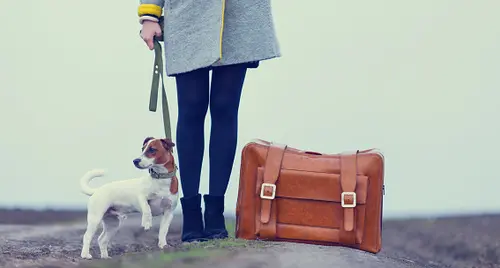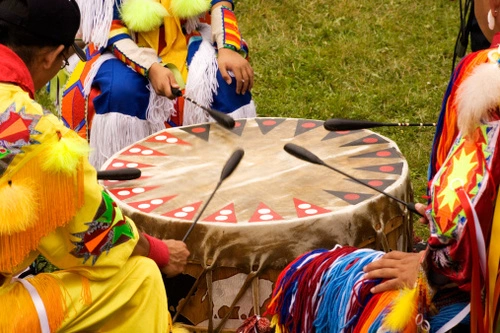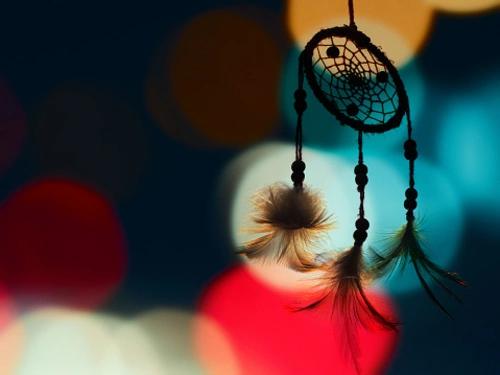1. Select a discrete app icon.

notes
The Moose Hide Campaign Calls on Men as Allies
Indigenous women in Canada at the highest risk for domestic violence
- Jul 13, 2020

You may hardly notice it, pinned on someone’s jacket or shirt, maybe to the side of a bag they carry. It’s a 1-inch piece of soft, tan moose hide attached to a silver safety pin. Canadian Prime Minister Justin Trudeau wears one. Its purpose: to start a conversation.
Why do you wear that?
Donate and change a life
Your support gives hope and help to victims of domestic violence every day.
Raven Lacerte, cofounder and national ambassador of the Moose Hide Campaign in British Columbia, Canada, says she hopes people will ask, and that the answer will be along the lines of, Thank you so much for asking. I’m standing up for ending violence against women and children.
Raven, 25, and her father, Paul Lacerte, began the Moose Hide Campaign in 2011. The first squares of hide were hand-cut by Raven and her sister from moose Raven herself hunted. Her and her father began handing them out attached to a card stating their hope that more men would stand up in solidarity to end violence against women, specifically in the Indigenous communities where the rates were disproportionately higher.
To date, they’ve now handed out 2 million squares—though their lofty goal is to reach 10 million. The pins and cards are free, can be worn by men and women alike and yes, there is a non-leather option as well. But as an Indigenous family who hunts, Raven says they chose moose hide as a symbol of redefining masculinity.
“We think that there’s so much love and healing power from the land and we really want to honor that strong healthy warrior spirt.”
This is Why It’s Needed
Since 1970, police believe at least 18 women have gone missing or been murdered along a stretch of Highway 16, a corridor that extends between Prince George—the largest city in Northern British Columbia—and Prince Rupert, a port city 450 miles away. But locals and activists believe that number is closer to 50 missing or murdered women—many of them Indigenous women. As such, the road has earned the moniker “Highway of Tears.” It’s where Raven and Paul were hunting moose the day the idea came to them.
According to the Canadian Femicide Observatory for Justice, Indigenous women and girls in Canada are anywhere from six to 12 times more likely to be murdered than non-Indigenous women and girls. And while the overall rates of femicide have declined in Canada, the rates for Indigenous femicide have risen—from 9 percent of all female homicides in 1980 to 24 percent by 2015.
Carolyn Bennett blames an “uneven application of justice.” She’s the minister of Indigenous and northern affairs in B.C. and spent months in 2016 traveling across the country speaking with those in Indigenous communities. She told The New York Times that survivors and families of those lost say police treat the deaths of Indigenous women “as inevitable, as if their lives mattered less.” Bennett says the Royal Canadian Mounted Police claim far fewer deaths and disappearances have occurred than the locals believe because the police deem the women’s deaths to be suicides, drug overdoses or accidents, and neglect to investigate foul play.
“There was no investigation,” Bennett told The Times, citing one recent case. “The file folder’s empty.”
Domestic Violence Rates Higher for Indigenous People
Results of a self-reported 2014 General Social Survey on Victimization found these concerning statistics:
- 10 percent of Indigenous women were assaulted by a current or former spouse within the last five years compared to 3 percent of their non-Indigenous counterparts. In the territories (Nunavut, Northwest Territories and Yukon, which are the three most northern and remote areas of Canada), that rate grew to 19 percent.
- In cases of spousal abuse, 51 percent of the Indigenous female victims reported injuries, compared to 39 percent among non-Indigenous victims. Of those Indigenous victims, more than half reported severe forms of violence—sexual assault or being beaten, strangled or threatened with a gun or knife.
- Indigenous victims of domestic violence were also almost twice as likely than non-Indigenous victims to fear for their lives—53 percent verses 29 percent.
And while the focus of the Moose Hide Campaign began with drawing attention to Indigenous victims—Raven and her father belong to the Carrier First Nation—Raven says the nonprofit “quickly evolved” as they learned more about domestic violence.
“It’s not just a women’s issue, it’s all of us,” says Raven, who says the issue became all that more prevalent to her two years ago when her daughter, Cedar, was born.
“When we first got this idea, I was 16 and my dad wanted to make sure ... I had opportunity and a life where I was safe. But then I had my own daughter, and I got it. The desire was astronomical. That’s kind of my main biggest driver now that I’ve had her.”
Just a few months ago, the Moose Hide Campaign become a registered charity. They can begin accepting donations and they hope to spread their message to an even wider audience. They began working with a consulting firm in Vancouver to measure their impact.
“They can confirm that for every moose hide pin distributed, it results in five conversations.” They want to start 10 million conversations.
“If we’re changing the narrative, we hope the culture is changing too ... the way we treat women and children.”
Looking for someone to speak with? Enter your location to find phone numbers for domestic violence experts in your area.
Have a question about domestic violence? Type your question below to find answers.






